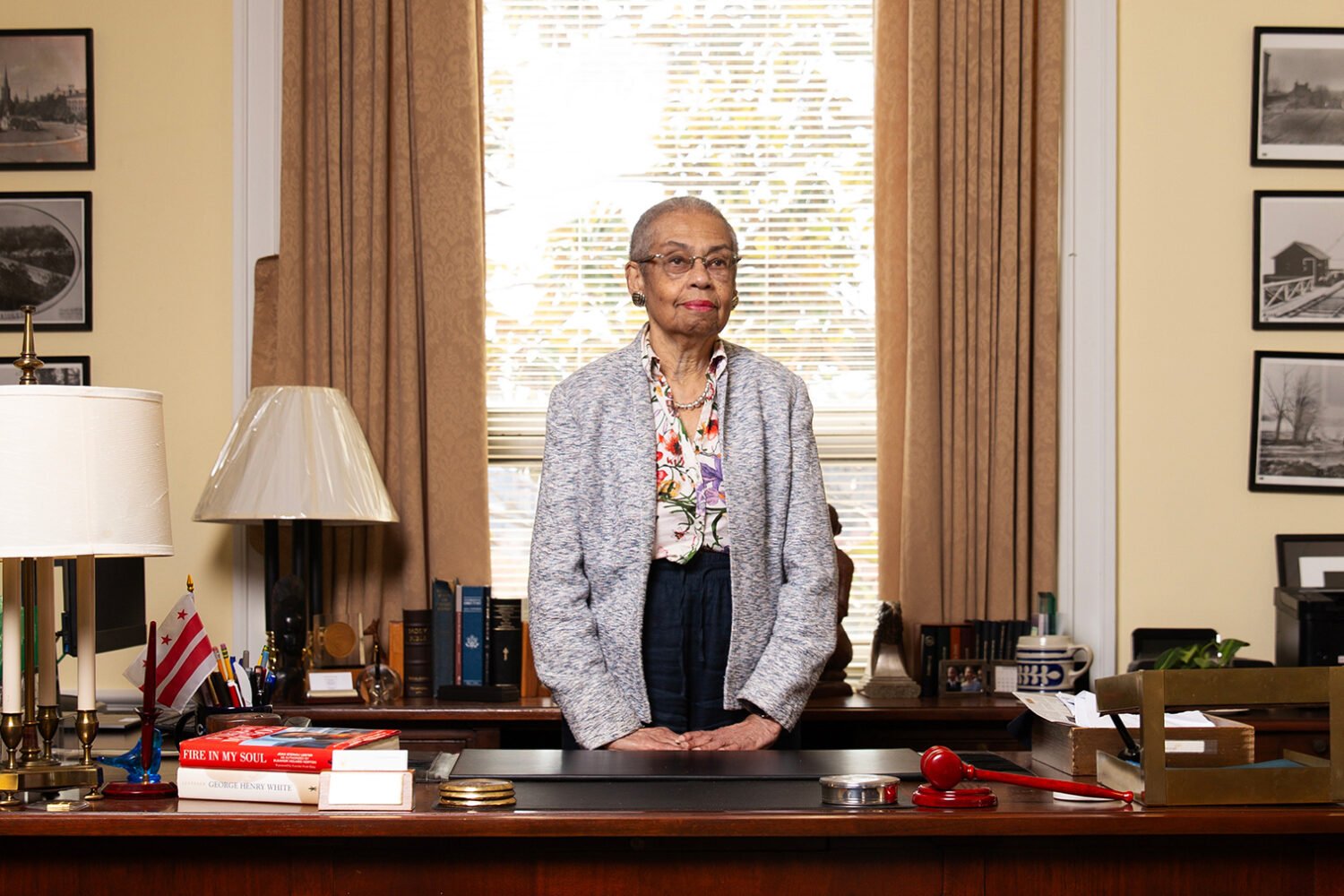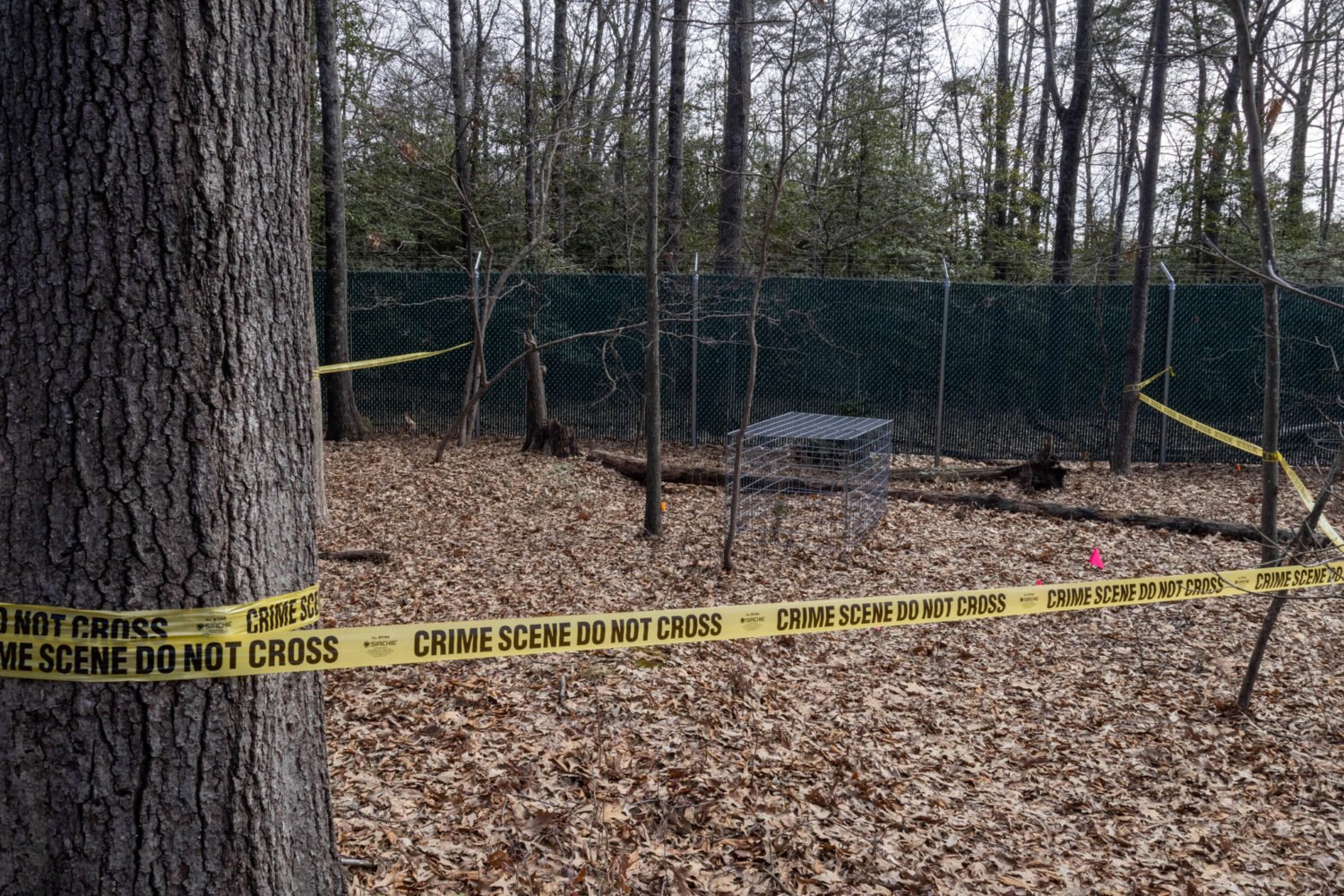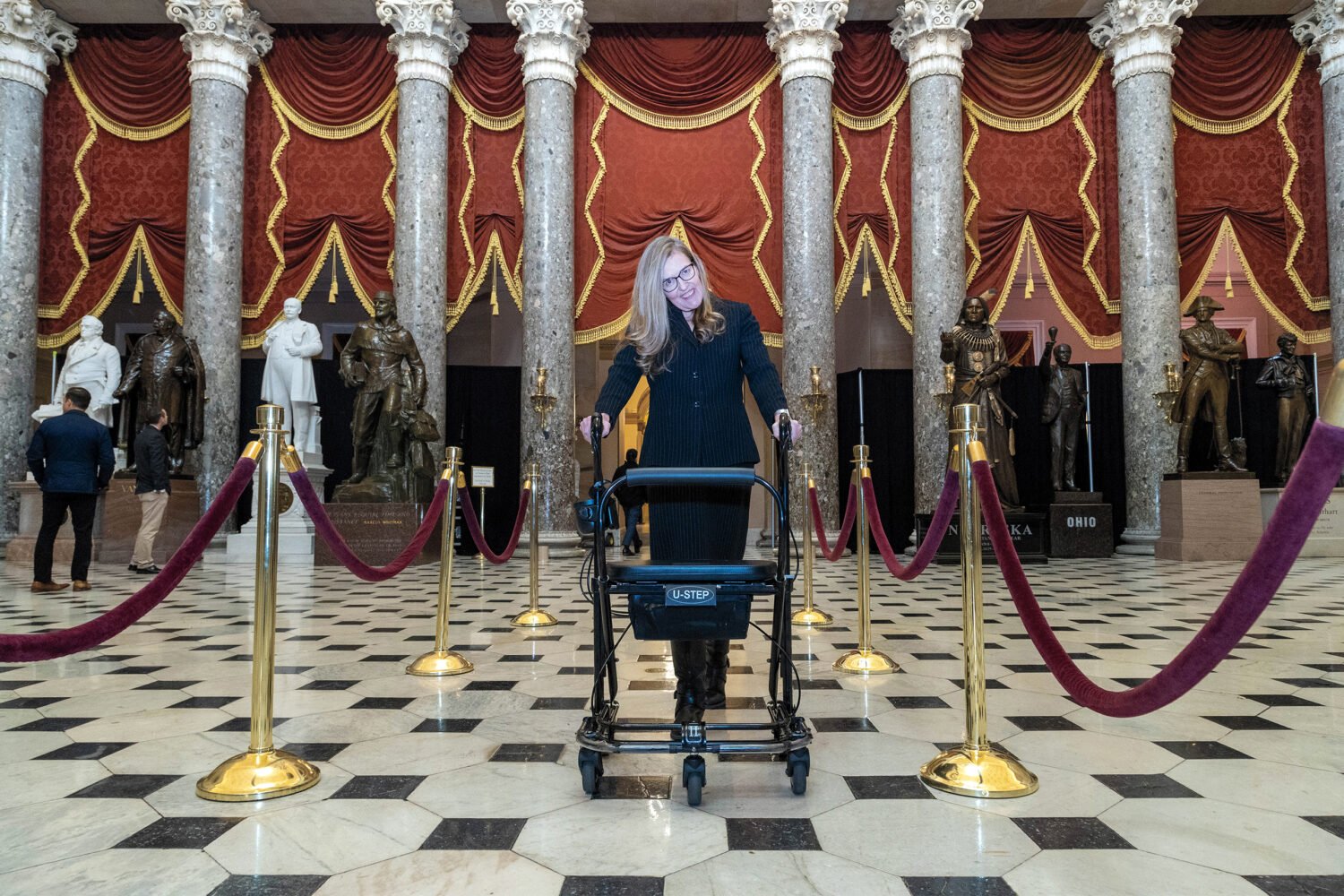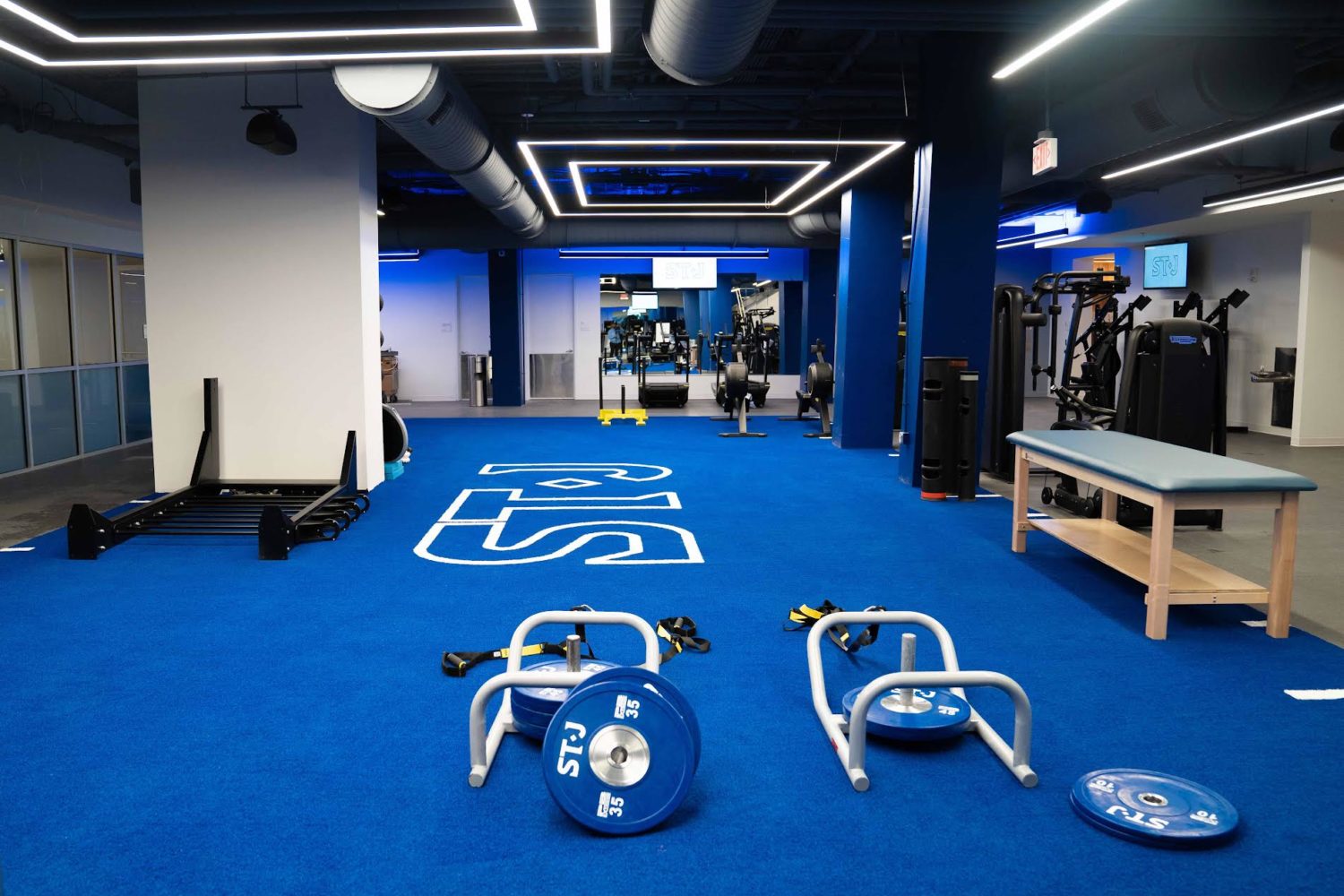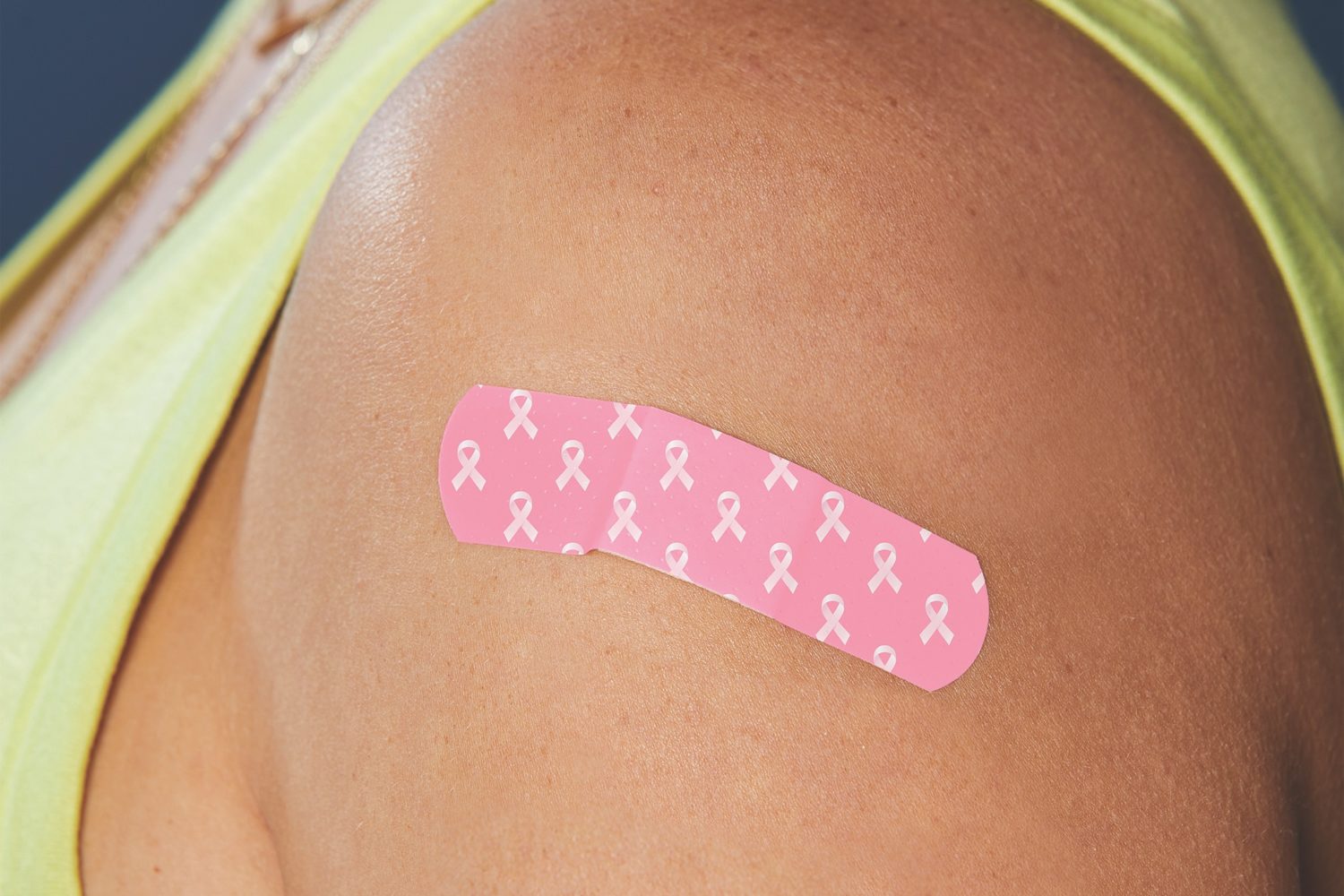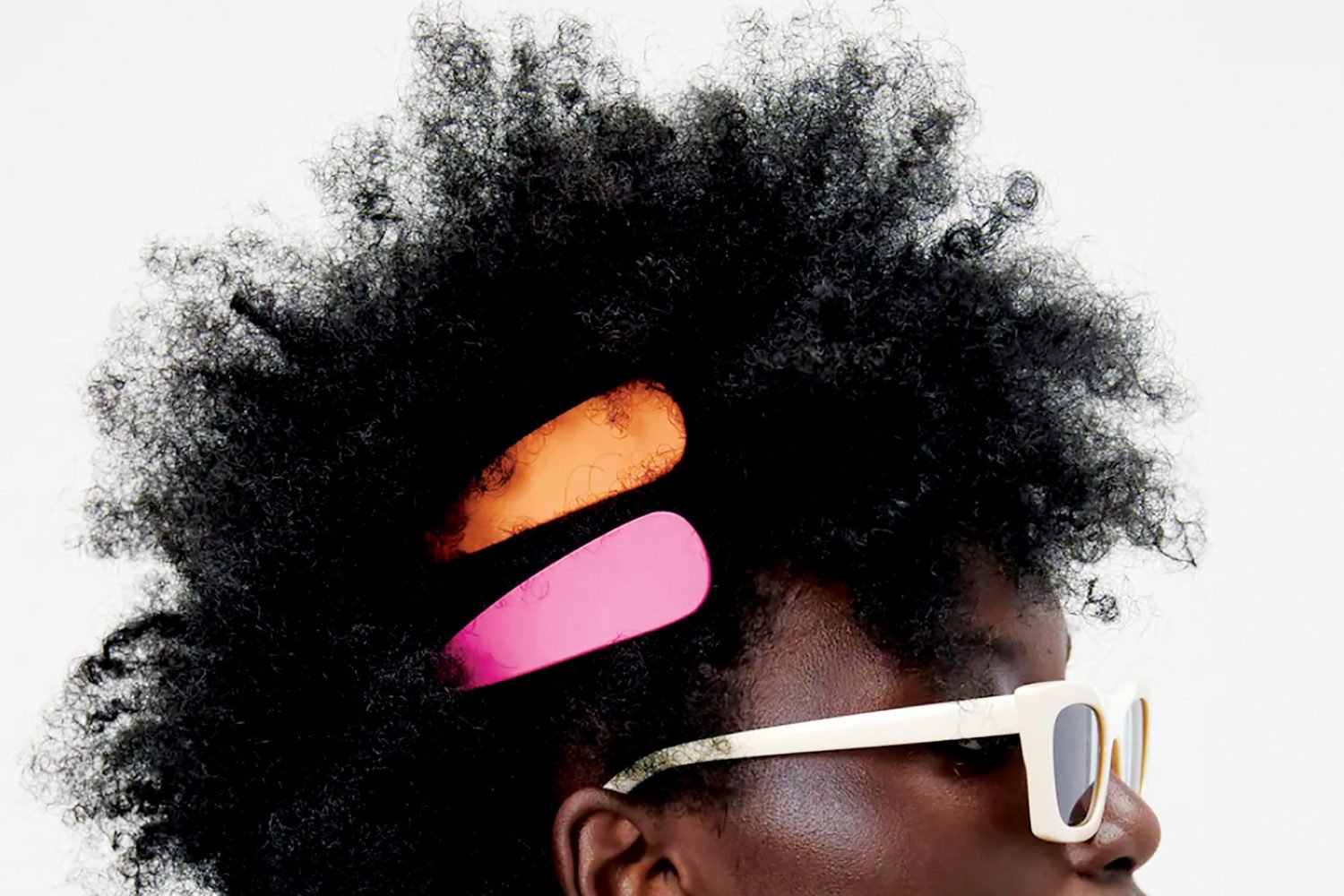Taylor Givens had worn a favorite Urban Outfitters dress to school that morning in the spring of 2011 and was horrified that an ER team at Inova Fairfax Hospital was cutting the cool boho frock off of her. Just hours earlier, she’d been sitting in Mrs. Ritchey’s AP Comparative Government class, muddling through a worksheet on the political institutions of China and talking with friends about graduation. So neither Taylor nor her parents were absorbing what a doctor was telling them—that the otherwise healthy 17-year-old was in acute heart failure.
Taylor’s senior year at Centreville High School had been her best yet. A trained soprano who sang everything from Italian arias to Elton John, often accompanying herself on the piano or ukulele, she had become president of the school’s competitive choir and been accepted to Virginia’s Radford University, where she planned to study music therapy.
With shoulder-length red hair, heather-green eyes, and a faint sprinkle of freckles atop her cheekbones, the twiggy teen was never the most extroverted kid but had a close circle of friends (mostly from choir, mostly good students like her), a fondness for the quirky, and an obvious streak of determination. In seventh grade, she’d panicked and walked off stage in the middle of a talent show when she fumbled her song, only to return at the end for a do-over of “Colors of the Wind”—and a standing ovation.
That strong will served her well when senior spring came along and she began feeling like something was wrong. Along with occasional shortness of breath, she’d complained of a racing heart and fatigue and seemed increasingly depressed and anxious. Repeated trips to the pediatrician always yielded the same diagnosis: senior-year stress. You have a lot going on. You’re nervous about college. We’ve seen this before. But the depression and anxiety got so bad that Taylor was admitted for a week to a psychiatric facility in Falls Church, where a combination of mood-stabilizing drugs and art therapy did little to improve her symptoms.
The mental-health theory wasn’t unreasonable. For the past several years, Taylor had had bouts of anxiety. But this felt different. “I knew my body better than anybody, and I knew that something was wrong,” she recalls. Finally, she and her family persuaded her pediatrician to order a chest x-ray one day in early April.
That evening, the pediatrician called. She had made an appointment for Taylor for the next morning with a pediatric cardiologist. There were no details. Just “You must get her there,” her father, Jody Givens, recalls the doctor saying.
The next day, Taylor went to Mrs. Ritchey’s class, then listened to the cardiologist explain that her heart was enlarged. He performed an echocardiogram, started tossing about the word “transplant”—and then told her bewildered parents to take Taylor to Inova Fairfax Hospital, where doctors would be waiting for her.
“I asked if we could go by the house and pack a bag,” recalls her mother, Lisa Givens, an assistive-technology specialist with Fairfax County Public Schools. “He said, ‘No, you need to go straight to the hospital. If you’re not going to go straight to the hospital, then I’m going to put her in an ambulance.’ ”

A medical team met Taylor outside, rushed her into the emergency room, and started cutting off that favorite dress. Tests confirmed that her heart had become so enlarged that it was failing, unable to pump sufficient blood through her body. Her “ejection fraction,” the percentage of blood being pumped out of the heart—which should be 60 percent or higher—was 10 percent. “Most kids who come into the hospital in Taylor’s condition don’t make it 24 hours,” Taylor and her parents recall a pediatric cardiologist saying.
Taylor called her boyfriend and stoically broke the news: “I’m at the hospital. They say I’m going to die, probably in the next several hours.”
She hung on in the intensive-care unit at Inova’s children’s hospital, in and out of consciousness for the next couple of days, but was slipping away. Doctors there were in a panic, unaccustomed to dealing with acute heart failure, the domain of the adult cardiac world. Jody and Lisa Givens both noticed that the pediatric cardiologist herself was crying. “That’s when it really hit us,” Jody says. “If the doctor is crying about this, we should probably be crying about this, too.”
Eventually, the cardiologist called the medical director of the heart-failure/transplant program on the adult side at Inova Fairfax. Dr. Shashank Desai was at the airport in Miami, about to fly home. He got to Taylor’s bedside by around 11 pm, performed a heart catheterization to better assess and monitor her heart function, and moved the teen to the adult unit. Once he had Taylor stabilized, he began the complex process of getting her on the waitlist for a new heart.
Doctors determined that most likely a virus, possibly even a cold virus, had triggered Taylor’s immune system to attack her heart and cause it to swell. The severe inflammatory disorder, called fulminant myocarditis, leads to a sort of heart muscle disease, or cardiomyopathy, which is a common cause of heart failure among young people, according to Desai.
Taylor went on IV medication, but by the first week of June, soon after turning 18, the five-foot-four teenager, down to 83 pounds, was crashing. Her ejection fraction had fallen to 5 percent. Desai moved her up to the most urgent status for a heart transplant—1A. The operation needed to happen in days, if not hours.
“I asked if we could go pack a bag. The doctor said, ‘No, if you don’t go straight to the hospital, then I’m going to put her in an ambulance.'”
He had her put on an extracorporeal membrane oxygenation, or ECMO, machine—an apparatus that pumps and oxygenates the blood outside the body, by way of large tubes surgically placed in an artery and a vein, typically in the groin. Considered a last resort—and the most extreme form of life support—the system is such an assault on the body that it isn’t sustainable for more than a week, maybe two, for adults. Because the wait time for a heart can be months to years, patients rarely survive ECMO to make it to transplant, Desai says.
Taylor had a few advantages. Listed for a heart when she was still 17, she would be ahead of all adults. And the timing might help her: As Desai told her family, more organs become available in the spring, when proms, graduation parties, and beach weeks can result in slightly increased fatalities among healthy young people.
But if no heart became available within the next few days, the family was told, there would have to be a difficult conversation.
One night, the ECMO apparatus began to falter, and a second machine was brought into Taylor’s room as a backup. Aides had to hand-crank the primary ECMO until it was working again. Even so, a nurse came in later and started moving out the spare.
“Hey, just to let you know, there’s a boy a couple doors down,” Taylor remembers a nurse saying. “He’s just a little bit older than you. He’s also in heart failure waiting for a transplant. We need to take the backup over to his room.”
Suzanne and Mark Kobelja knew right away in August 1988 that something was wrong with their newborn son. Collin was not the blushing pink hue his sister, Mary, had been when she was born two years earlier. He was a putty gray, and his tongue and nails were dark. Within 24 hours, the Kobeljas would learn the cause: Collin had a congenital heart defect.
By three days old, their son was being wheeled in for surgery so doctors could place a shunt. But that was only a temporary fix. What the baby needed, they eventually concluded, was a new heart.
Heart transplants on children were still extremely rare in the late 1980s, and the survival rates were modest. Collin was then in the care of Children’s Hospital of the King’s Daughters in Norfolk, Virginia, where Mark, a naval officer, was stationed. The hospital was starting a transplant program but had yet to perform one. Collin, scheduled just after New Year’s 1990, would be its first.
The Kobeljas had had mixed feelings when the call came that a heart was available for their son, by then 17 months old. “You want this heart transplant, but you’re scared to death that he may not make it,” Suzanne says. There was a risk that his small body would reject the new organ and, even if all went smoothly, the parents were told, only a 50-percent chance of survival five years on.
Suzanne took as a good omen an oddly coincidental fortune cookie that young Collin had tried to chomp into two weeks earlier at a Chinese restaurant. You will have a change of heart, read the slip of paper the Kobeljas still keep in a box with Collin’s baptism gown and other childhood mementos.

The day of the procedure, Suzanne watched as the transplant team walked down the hall holding a cooler containing the donor organ, which had come from someplace outside Norfolk. Her next-most vivid memory is seeing her son just after the surgery—for the first time “a beautiful baby pink.”
A crowd of news photographers had gathered across the drive as Collin left the facility in a little red wagon with his sister. Inspired by the experience, Mark Kobelja decided to pursue a career in medicine. He enrolled at the Uniformed Services University in Bethesda, and the family settled into a small house in Kensington, where Collin would survive—and thrive—past five years, then ten, and 20.
He and his sister took tae kwon do lessons. He ran, swam, kicked soccer balls with friends, got into trouble for talking too much in class. At Bethesda’s Walter Johnson High School, he wasn’t a particularly enthusiastic student, but he was affable, easygoing, “a social butterfly,” says his sister, Mary. The kids at the YMCA camp where he worked as a counselor for many summers adored him.
In the spring of 2011, the family was preparing to move to California for Mark Kobelja’s job, when Collin, 22 at the time, became sick with what he thought was the flu. He had such a bad cough that it was keeping his sister up at night. He was vomiting and felt fatigued. One day, walking up the steps to his front door, he couldn’t catch his breath.
That night, his father listened to his heart and lungs and didn’t like what he heard. He took Collin’s blood pressure: through the roof. He called Inova Fairfax, where Collin had for a few years been seeing a cardiologist—Dr. Desai—and the physician instructed him to get Collin to the hospital first thing in the morning, if not sooner.
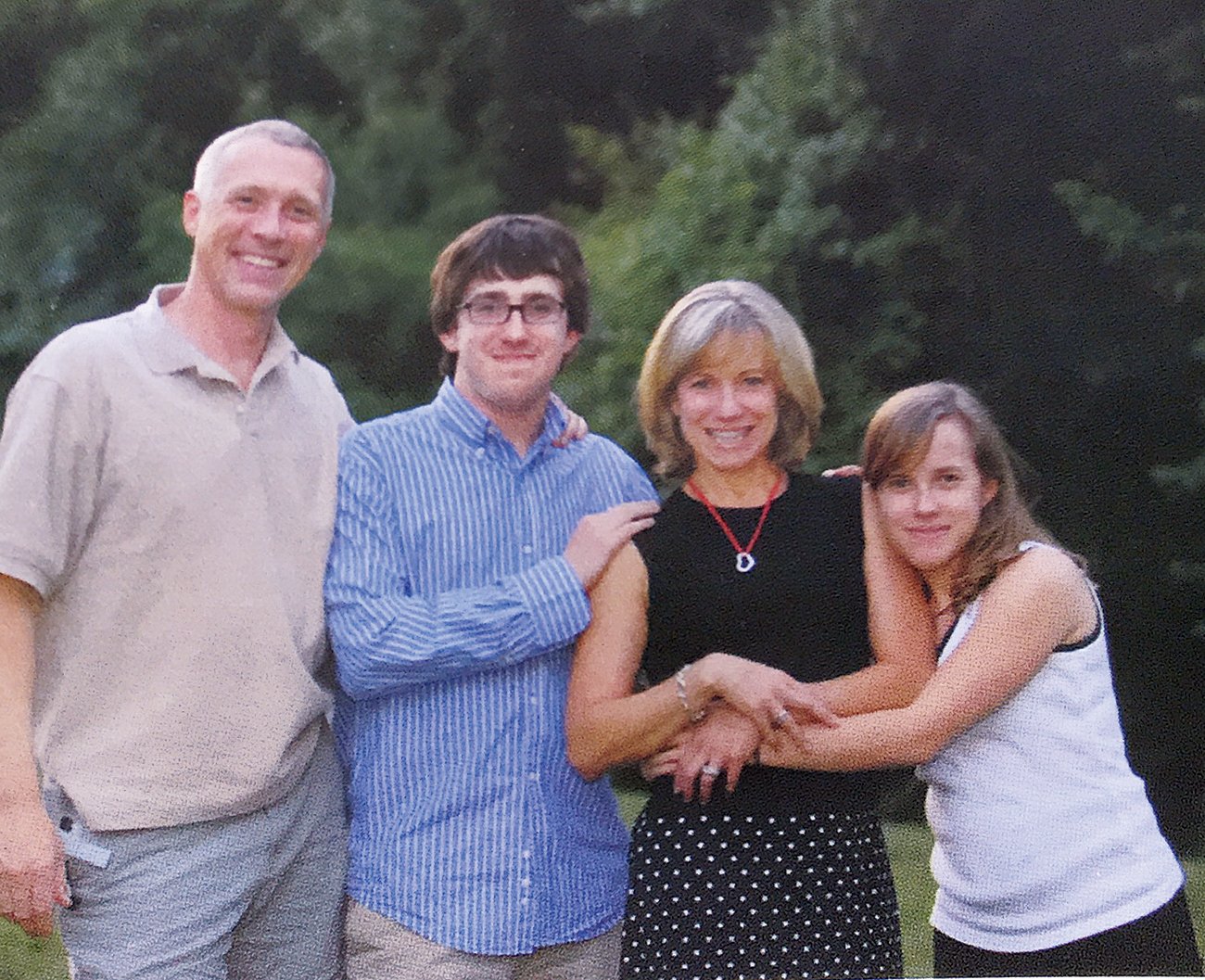
Collin didn’t have the flu. An echocardiogram showed that his heart’s ejection fraction was 10 percent, as Taylor’s had been. He was in heart failure. The organ that had grown with him into adulthood had abruptly become dysfunctional. Doctors never figured out exactly why but put him on the list for another transplant at 1A status, his only chance of survival.
“Things went downhill, downhill, downhill,” his mother remembers. The Kobeljas felt guilty that they hadn’t acted sooner. “Who knew a terrible cough was really heart failure?” Suzanne says.
By early June, Collin’s body was giving out so dramatically that doctors had to sedate him heavily, put him on a ventilator, and tether him to the ECMO machine that had been serving as backup in Taylor’s room.
While he slept, the Kobeljas sat by their son’s side, stroking his face, holding his hand, and telling him all would be okay. But Mark Kobelja, an anesthesiologist who is now a hospital chief in the Washington area, knew what the doctors meant when they told the family that if a heart didn’t become available soon, they’d have to discuss how to move forward.
By any measure, the week of June 5, 2011, would have been a remarkable one at Inova Fairfax. Doctors were looking after not one but two young adults with acute heart failure. Both were on life support. Then a stunner: Within 24 hours of each other, hearts became available for both Taylor and Collin.
“I don’t think I’ve had another patient, before or since, who has been on ECMO and survived to transplant,” Desai says. The chance of receiving a donor offer during the sliver of time in which a gravely ill patient on ECMO might become stable enough to make it to the operating room, he says, “is a little like winning the lottery.”
That week, it was happening twice, with a heart in Georgia that was a possible match for Taylor and one in Florida offered to Collin.
When organs such as hearts and lungs become available, time and geography are as critical as size and blood type, with those nearest getting priority among those who are a match. A heart, once it’s removed from the donor’s body, needs to reach the transplant patient in less than six hours. As soon as surgeons were sure they had good matches for Taylor and Collin, they harvested the organs at each site and rushed back to Washington with them as the two Inova patients were prepped for surgery.
By the early hours of June 9, Taylor’s surgery had begun. Collin’s started that afternoon.
“We were over the moon,” recalls his mother. “Who would be elated that their child was having a heart transplant? When you’re looking down the barrel of no options and absolute death, this was fantastic.”
The Givens family, too, felt lucky. Only later did they realize just how lucky they were. Into the sixth hour of their vigil in the waiting area, a doctor came out to alert Lisa and Jody to a complication: After completing the transplant, surgeons discovered that Taylor had been bleeding internally from an artery torn by the large ECMO tube. They had to open Taylor’s abdomen and reopen her chest.
Her parents struggled to hold it together. Jody tried to muster positive energy to send Taylor’s way. Lisa prayed. More than 12 hours after Taylor was taken to the operating room, doctors finally reemerged, this time to tell Jody and Lisa that their daughter had made it.
Had a heart come even one day later—perhaps even a couple of hours later—it may have been too late for Taylor, doctors told the family, because such undetected bleeding is often fatal.
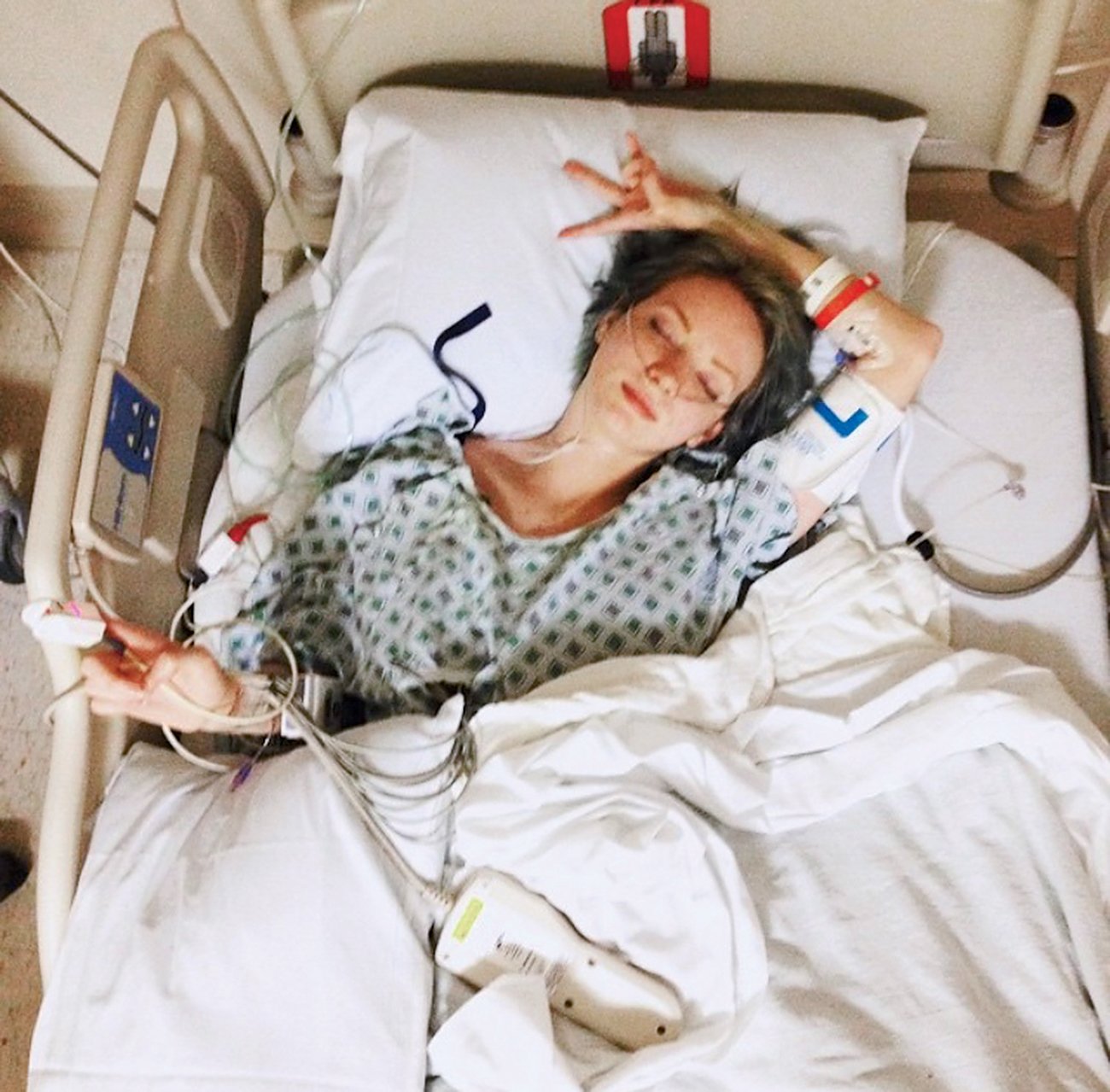
Taylor remained heavily sedated and on a ventilator for eight days, Collin for three. For both of them, recovery was tedious and painful.
Collin got pneumonia and had so much edema, swelling from fluid buildup, that he struggled to move even an arm. As Taylor’s classmates marched in their caps and gowns, she was relearning how to walk and talk. A breathing tube had been in place so long, it had damaged her vocal chords.
Eventually, the Centreville High principal and teachers threw a graduation ceremony for Taylor in the ICU, draping a gown over her blanket and playing “Pomp and Circumstance” on a laptop. Still hooked up to a feeding tube, she couldn’t eat the cake her mother had brought, but a nurse put a dab of frosting on a spoon and helped her bring it to her lips. “It was one of the best feelings in the whole world to taste sugar again when you haven’t been able to eat,” Taylor says, “but on the flip side, it made me really sick.”
Doctors at the children’s hospital were panicked, unaccustomed to dealing with acute heart failure, the domain of the adult cardiac world.
Suzanne Kobelja, at the time a fitness instructor at the Bethesda–Chevy Chase YMCA, had stopped by after the gathering to say hello, then excitedly told her son about the sweet 18-year-old two doors down who’d also just had a heart transplant. Collin was in too much discomfort to care. “Good for her,” he thought. Taylor, on the other hand, was ecstatic when she heard about Collin, desperate to connect with someone whose experience mirrored hers.
The two never met while in the hospital, but later they’d bump into each other at their follow-up appointments with Dr. Desai, where they were often scheduled back to back. Taylor tried to forge a friendship. Hey, Collin, how are you? How ya feeling? But every time, she was met with monosyllables. Good. . . . Bye.
“I thought, ‘He’s such a jerk. I hate him,’ ” Taylor recalls.
To avoid contact, Collin would dash straight to his car after his appointment. “I was just in a bad place,” he says. “I didn’t want to engage. I was unhappy. I didn’t want to talk about the experience.”
Besides, he wasn’t sticking around Washington. Mark Kobelja was already in California for his new job, and Collin and his mother planned to join him once Collin was healthy enough to board a plane.
The recovery year was difficult. Taylor watched her friends go off to college while her future was on hold. Collin lived with his parents in San Diego, took a job at a used-book store, and eventually started getting back in shape, working out at a Muay Thai gym.
The two became Facebook friends, still with only minimal contact, and it was there that Taylor would learn, a year and a half later, that Collin was about to have another heart transplant: his third.
He had been feeling fine—good, in fact —but his annual post-transplant catheterization at Sharp Memorial Hospital in San Diego alerted the cardiologist to a problem. Antibodies in his bloodstream were causing severe blockages in his coronary arteries. Sharp referred Collin to Cedars-Sinai Medical Center in Los Angeles, whose heart institute performs more adult transplants than any other hospital in the nation. After stronger immunosuppressive medications and in-hospital blood treatments failed to reverse the problem, Collin once again faced his only option—transplant —and was put on the waiting list.
Three weeks later, he and his mother would drive to LA in the middle of the night after getting the 1 am call that a heart was available. Collin was given a caveat: The donor was a 19-year-old who’d died of a drug overdose, considered a high-risk category because of possible infections in the blood. But the head of the transplant team assured Collin he’d found no complications and the heart was a great match.
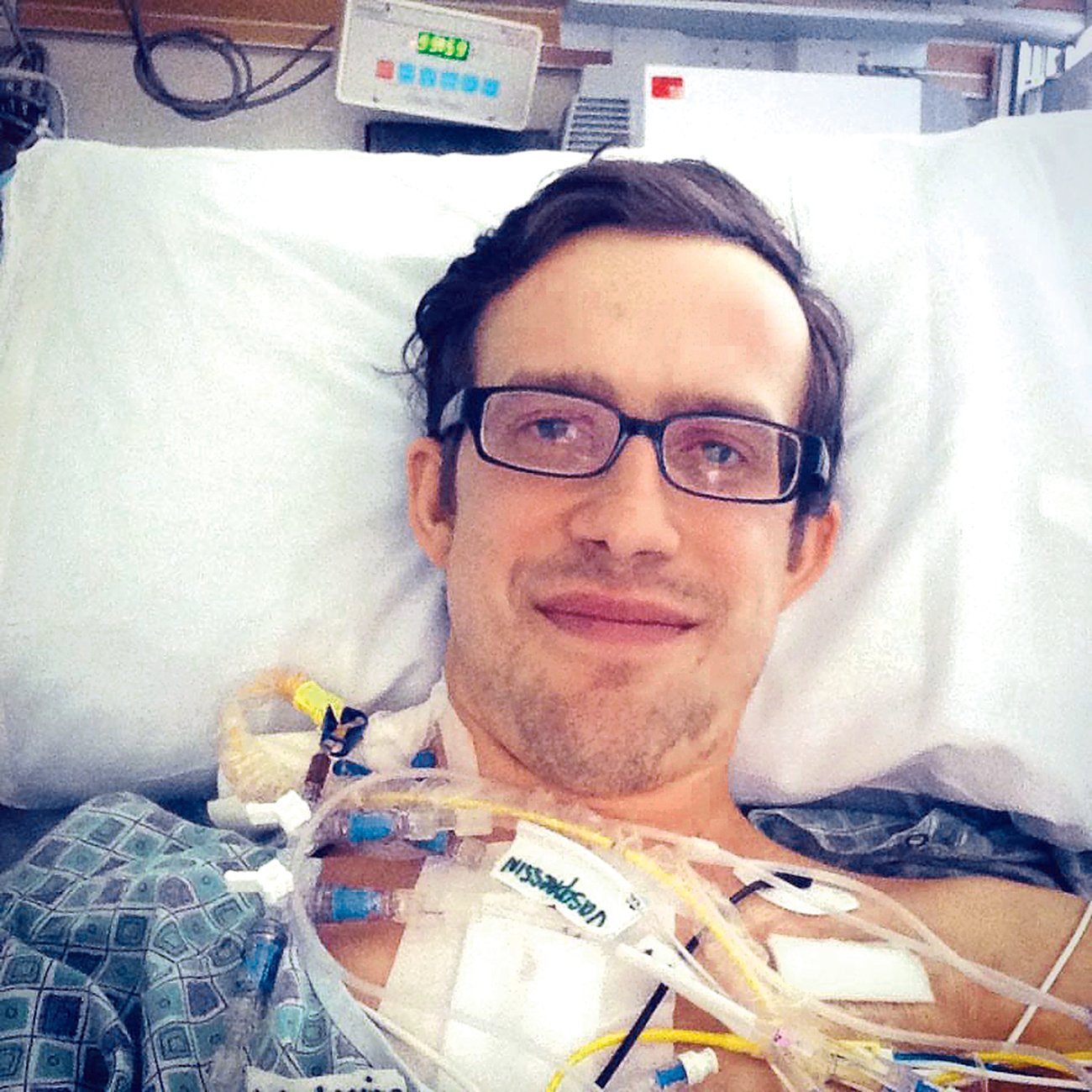
This time, Collin was out of the hospital in one week. Less than a month later, he was walking two miles up Sunset Boulevard looking out at the Hollywood sign.
Taylor was relieved—she had sobbed when she’d seen he was undergoing another surgery, feeling sorry for Collin but also scared that the same fate might befall her. She was still struggling to process all she’d been through, suffering from posttraumatic stress disorder, she says. A year later than planned, she entered Radford University but left abruptly and returned home in the middle of her second semester when anxiety overwhelmed her. Her mind kept homing in on a statistic she’d read that put post-transplant survival of 12 years at 50 percent for patients who make it through the first year, which meant the odds of her reaching age 30 were no better than a coin toss.
Changing up her hair helped her cope: She dyed it pink, then blue, added purple tips, went ultra-blond, even gray—anything but her natural red. “It was a way of making me feel like I was in control that was not hurting anybody, or myself,” Taylor says.
A therapist she was seeing told her to make a list of 100 things she was grateful for. In her journal, Taylor wrote down everything from “my donor” and nurses to The X-Files and remote controls. Somewhere in the middle of the list—misspelled—was the name of the guy who’d barely given her the time of day but with whom she still felt an inexplicably deep bond: Collin Kobelja.
Facebook message from Collin to Taylor on June 9, 2016, the five-year anniversary of their transplants at Inova Fairfax:
Hey there! Quick question, does dr. desai and/or Mary Beth still work at Inova?
Collin was in the area visiting his sister, who’d become a teacher with Montgomery County Public Schools, and thought he’d pay a visit to the cardiologist he and Taylor both felt had saved their lives, as well as the nurse practitioner who’d become like family to them. Taylor happened to be in the hospital, where she’d just had her tonsils removed after one too many bouts of strep.
She replied: Yep, they both still do! I’m actually in the step down unit right now and I think they’re both here today as well. . . . I should be leaving in like half an hour hopefully but I’m in 321 CTU North if you want to stop by! That would be pretty cool!
Collin, 27 by then, was back to his old self, sunny and outgoing. The shockingly easy recovery from the transplant at Cedars-Sinai seemed to have jump-started a new sense of purpose in him. Serious about his education for the first time, he enrolled at a community college and eventually transferred to the University of California, Irvine. Taylor, then 23, was still trying to figure out the way forward. The damage to her vocal chords from the breathing tube, though much improved, had been enough to end her dreams of a career in music. But she was working as a nanny and volunteering at a suicide hotline, had taken night classes at George Mason University, and had started public speaking on behalf of organ donation. She was a redhead again. The two had been in touch a few times through the years, always via Facebook and mostly when Taylor had a health-related question. When she turned 21, she asked Collin what it felt like to have a beer.
That Thursday in June 2016, Taylor lay in her hospital bed, feeling altogether unglamorous in a brown velour Juicy Couture tracksuit, her hair three days from its last shampoo. She was waiting for discharge forms when Collin stopped by. He stood at the foot of the bed, and they compared notes about college, their medical journeys, their families. The 15-minute conversation was unremarkable. The vibe in the room was anything but.
“It just was like a really strong connection that I don’t think either one of us was expecting,” Taylor says.
Her mother felt the spark, too. “Oh, my gosh! I could see the way he was smiling at her and the way she was smiling at him,” says Lisa Givens. “It felt very different than just an acquaintance you would run into and catch up with.”
They exchanged numbers, started texting each other, and made plans to get together outside the hospital. At a Chinese restaurant in Annandale five days later, they laughed when they both stopped to take their transplant medication—the same one—at the same time.
Collin invited Taylor to visit him in California. They found they both were drawn to small bookstores and diners, comic books and video games, Game of Thrones, alt rock, playing Pokémon Go at the Santa Monica Pier. Collin was warm and optimistic, Taylor analytical and pragmatic—each an inspiring and supportive balm for the other.
By the end of the week, they realized they not only wanted to date—they never wanted to be apart.
“It was like, this is really good. We’re both really happy,” Taylor says. “We have a lot in common even beyond the transplant stuff.”
“It was just feelings,” Collin adds. “We just knew.”
“And neither one of us has ever been that kind of person—ever,” says Taylor. “So I think that it’s cool.”
“Yeah,” Collin says, giving Taylor a gentle kiss. “It’s perfect.”
Their Hollywood ending would have to wait—first for Collin to finish college, then for a far more formidable impediment.
Just as he was preparing to move back to Washington in the summer of 2017 for what the couple assumed would be an official engagement, apartment-hunting, and a June 2018 wedding, Taylor was diagnosed with cancer.
“Cancer takes all of your plans and just laughs at them,” she says.
Taylor had had mysterious abdominal pain for months before doctors figured out the culprit: post-transplant Burkitt’s lymphoma. The aggressive, fast-growing form of non-Hodgkin’s lymphoma was Stage 4, and Taylor had malignancies in her pelvis, abdomen, and chest.
Cancer among transplant patients is not uncommon—the drugs they remain on to prevent organ rejection suppress the immune system. Taylor’s particular cancer, however, was rare in transplant patients and was spreading quickly. Anthony Felice, a medical oncologist and hematologist at Inova, devised an aggressive treatment plan of chemotherapy and additional prophylactic courses. A doctor who often eases his patients’ anxiety with astonishing card tricks, he says he was amazed by the resolve and medical savvy of his young patient: “Her feeling was ‘This is just another challenge in my life—what do I need to do to move forward?’ ”
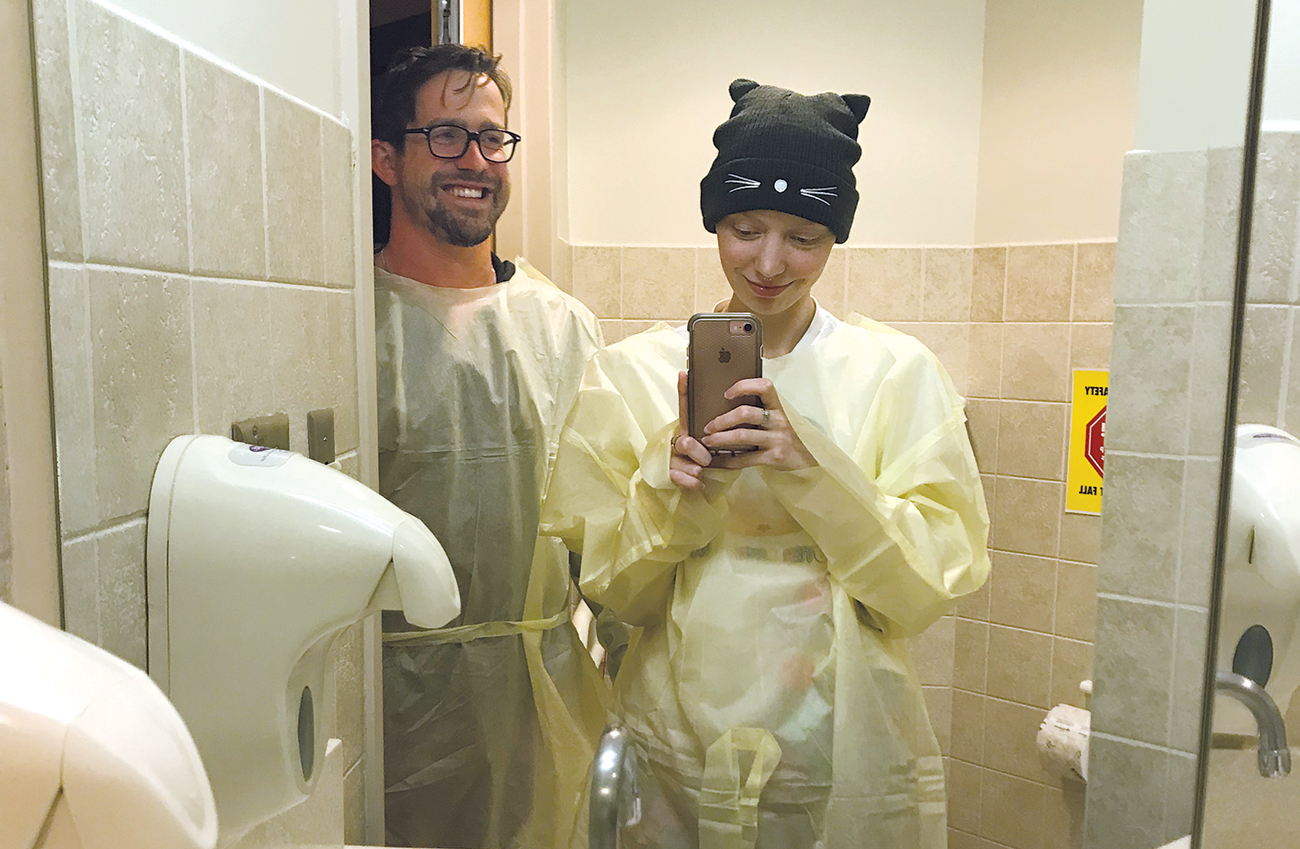
Collin moved from California as planned to be with Taylor, and the two stayed with his parents or with Taylor’s family. He was at her bedside through months of chemotherapy, hair and weight loss, pneumonia, drug-induced loopiness—in all, a more difficult episode than her heart surgery. “Once you get the transplant, you’re in pain, but every day gets better and better,” she says. “With cancer and chemo, not so much. It was about six months of constant awful.”
Finally, by spring of this year, she had finished treatment and her cancer was in complete remission—“the best possible thing we could have hoped for,” says Felice.
The couple dared to contemplate a future. “I just want a life—with you,” Taylor says to Collin, “and that’s it.”
The survival rates that once tormented Taylor no longer haunt her—or Collin—because, they note, the two of them, now 25 and 29, are decades younger than most heart-transplant patients and have already defied odds. “We are clearly the outliers,” Collin says. “No matter what the statistics say, it’s not going to apply to us. We should have died, like, three times during our time at Inova.”
But their close calls have forced them to confront issues of mortality in a way few people their age have to. “That death concept, I think, is something that transplant patients learn to sit with,” Taylor says. Though not top of mind, the concept is there when they think about the contours of their future together. Because of their delicate health, they’ve decided not to bring children into their family. “We can deal with ourselves and our own mortality,” says Taylor, “but I don’t ever want to have to tell a kid that both of their parents have an illness that could take them out at any time.”
“We’ll be the awesome uncle and aunt,” says Collin.
“I don’t want to have to tell a kid that their parents have an illness that could take them out at any time.”
In the meantime, they’re picking up where they left off before the cancer stalled their plans. In July, Collin accepted a job as a human-resources coordinator with Holy Cross Health. Once she’s stronger, Taylor would like to focus on improving support services for teens, a gap she noticed when hospitalized at 17. She also hopes to continue public speaking as an advocate for organ donation.
Collin has never sought contact with any of his donors’ families, wary of how emotionally fraught a connection might be. But from time to time, Taylor thinks about reaching out to her donor’s family; she had sent the family a letter once before to express her gratitude but never heard back. Her father says he thinks about them often, and his eyes fill with tears as he talks about a family so dear to him, even though they’ve never met: “They may be grieving forever. I understand that. That could have just as easily been us.”
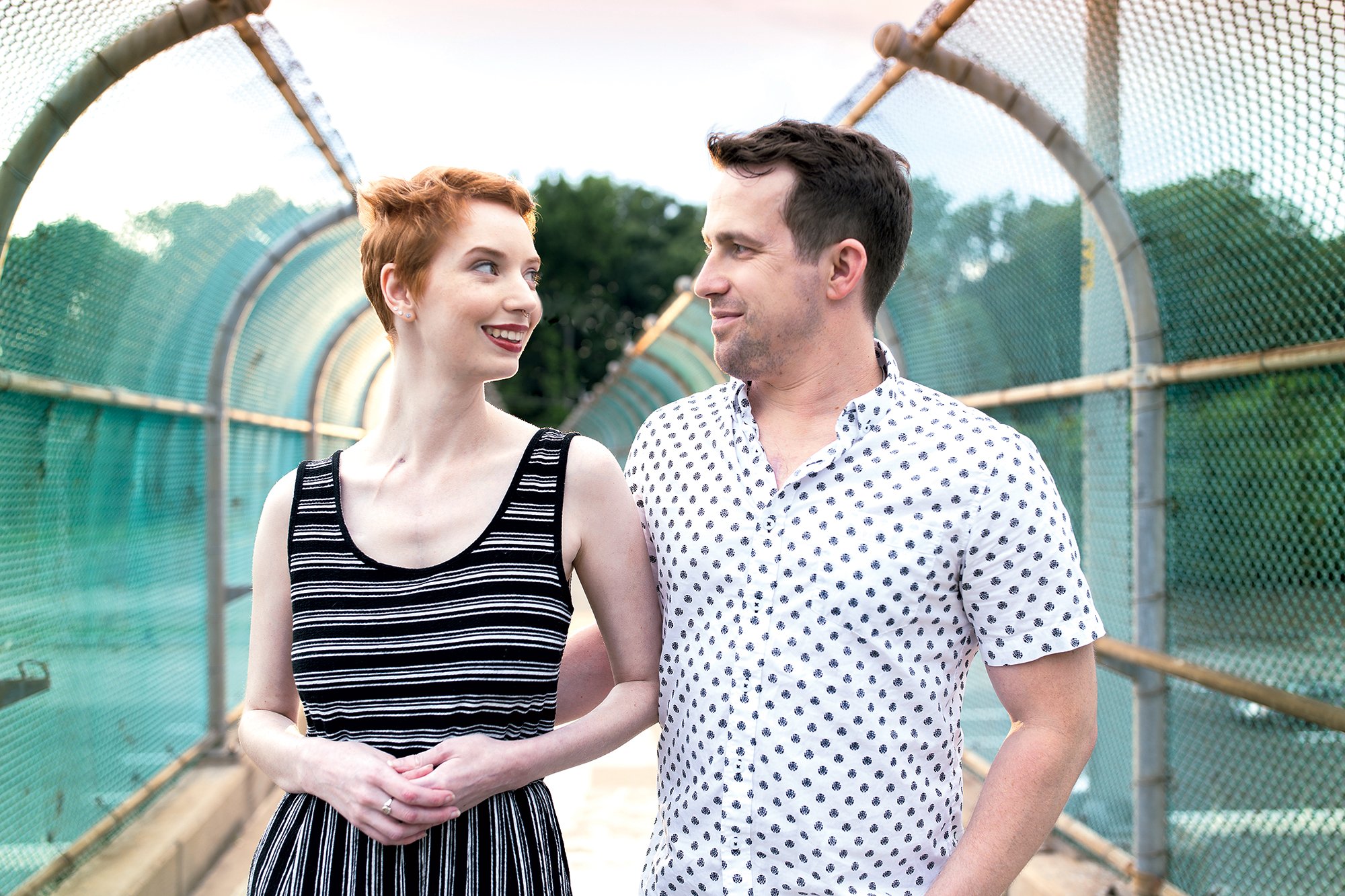
Instead, for the Givens and Kobelja families, a joyous occasion awaits.
Taylor says she’s excited to exchange vows, to use the word “husband,” to correct people when they misspell her new last name. Collin has started browsing online for a condo or townhouse where they can cuddle up with a bunch of pets and watch their favorite episode of Parks and Recreation for the tenth time.
They envision an unconventional wedding, possibly in the healing garden of Inova’s cardiac ward, where both were wheeled out, though never at the same time, for a few minutes of sunlight on their darkest days. They’ve talked about having chili from Hard Times Cafe at their celebration, maybe Krispy Kreme doughnuts instead of wedding cake, and possibly a song by their favorite alt-rock band, the National, for their first dance.
Their ideal date for the union: June 9, the anniversary of the transplants that gave an 18- and 22-year-old days, months, and years that they otherwise wouldn’t have had. This past June, the 9th fell on a Saturday, which they thought would have been perfect for a wedding. Next year, it will be a Sunday, which they both agree is just as good.
This article appears in the August 2018 issue of Washingtonian.

